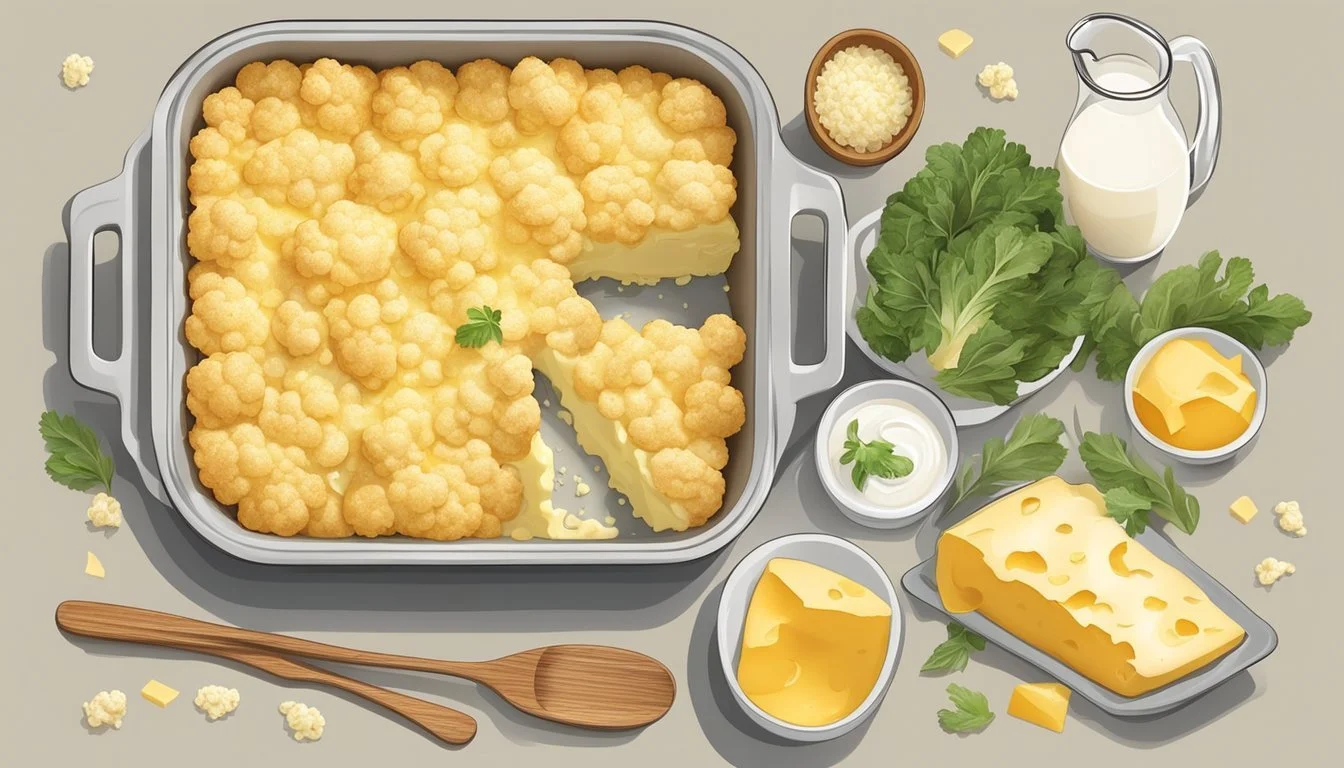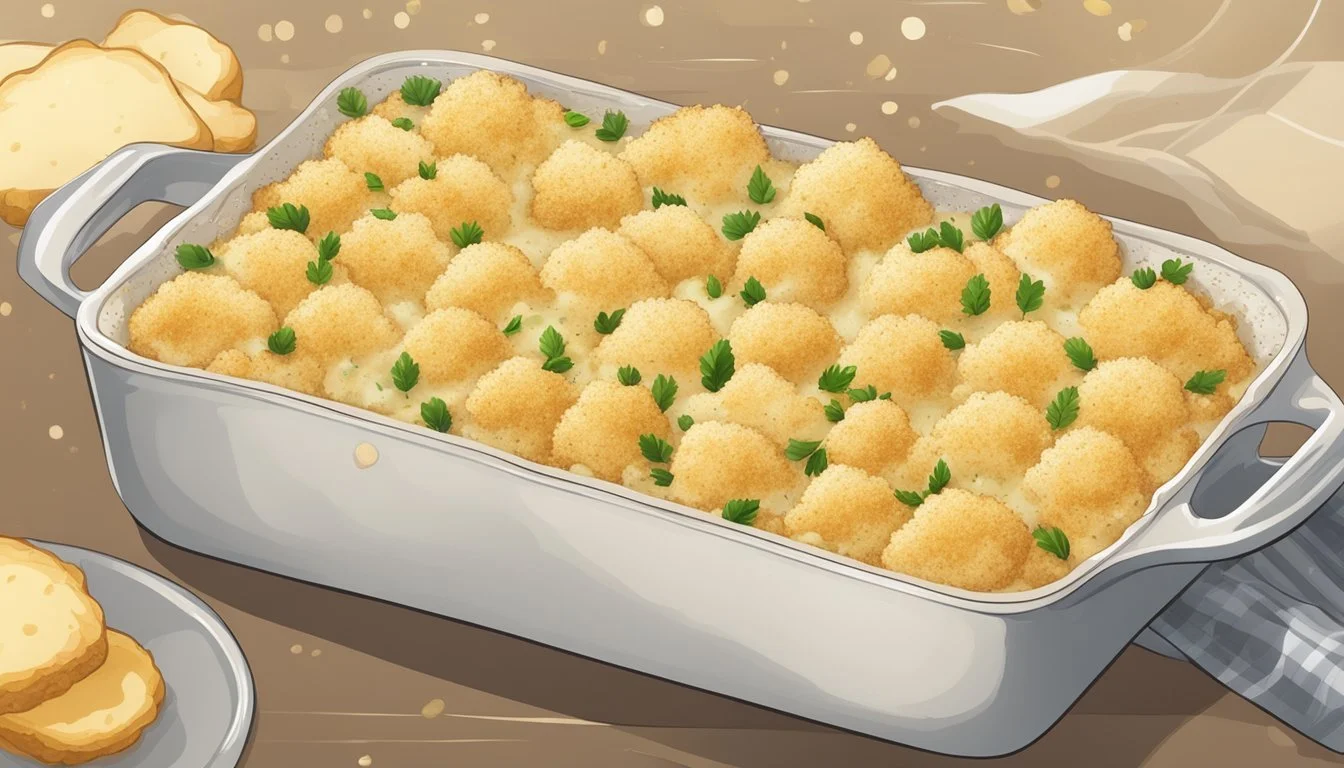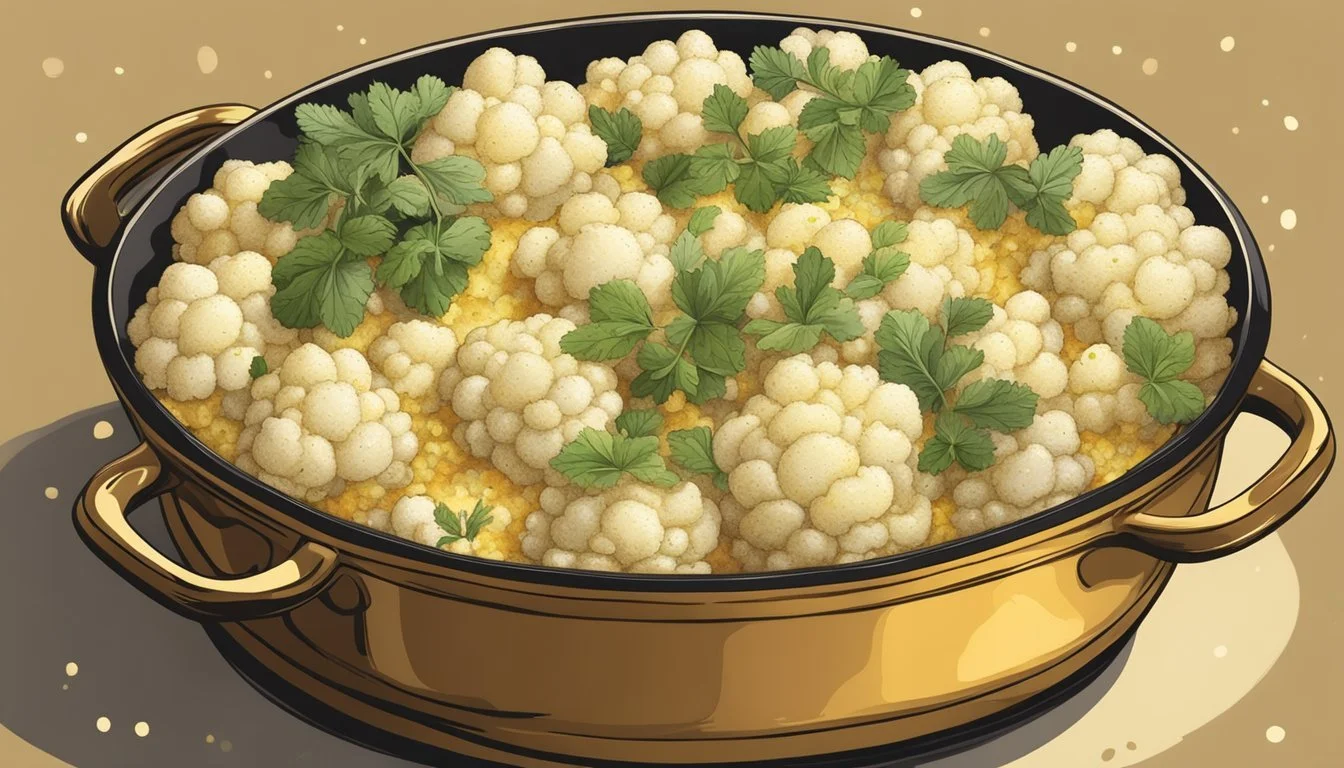Best Way to Reheat Cauliflower Gratin
Ensuring a Creamy and Bubbly Texture
Cauliflower gratin is a classic side dish renowned for its creamy texture and rich flavor, making it a beloved comfort food. Ensuring that leftover gratin retains its desirable creamy consistency and bubbly top when reheated is a concern for many. The key to successfully reheating this dish lies in the method chosen, which can affect not only the temperature but also the maintenance of its textural integrity.
To preserve the creamy and bubbly qualities of cauliflower gratin, the oven emerges as the preferred appliance. Compared to the microwave, which can unevenly heat and potentially dry out the dish, the oven provides a gentle and consistent warmth that restores the gratin's original glory. It's essential to preheat the oven, as placing the dish in a cold oven could lead to prolonged cooking and further moisture loss.
Precision in temperature and timing is crucial, and generally, an oven preheated to 350°F (175°C) is recommended. Covering the gratin with foil can prevent excessive browning while reheating, and the dish should be heated until it's warmed through, typically for about 15-20 minutes. These steps help maintain the gratin's luxurious qualities, ensuring it remains a delectable treat for subsequent servings.
Essential Ingredients for Cauliflower Gratin
The success of a cauliflower gratin dish hinges on the quality of its two key components: the cauliflower itself and the cheese sauce that envelops it. Selecting fresh, firm cauliflower and crafting a rich, smooth cheese sauce are fundamental to creating a gratifying gratin.
Choosing Quality Cauliflower
One should opt for fresh cauliflower with a uniform, creamy white color, free from brown spots or blemishes. The florets should be tightly closed, and the leaves should look vibrant and green, indicating freshness. A firm texture is crucial as it ensures that the cauliflower will retain its structure and not disintegrate during the cooking process.
Creating the Perfect Cheese Sauce
A cheese sauce begins with a roux, a mixture of melted butter and all-purpose flour that thickens the sauce. For a flavorful and creamy sauce, one would typically use milk as a base, adding gruyere, cheddar, or a combination of both for a complex, rich flavor.
Ingredients for Cheese Sauce Butter (for roux) All-purpose flour (for roux) Milk Gruyere cheese Cheddar cheese Nutmeg Salt and pepper Garlic (optional)
Key seasonings like salt, pepper, and a pinch of nutmeg add depth, while garlic can be included for an aromatic kick. To finish, freshly chopped parsley garnishes the dish, adding a burst of color and a fresh, herby note. The sauce is complete when it coats the back of a spoon, indicating it has reached the desired creamy consistency.
Preparing the Breadcrumb Topping
Creating the perfect breadcrumb topping for cauliflower gratin involves choosing the right type of breadcrumbs and adding fats such as butter and cheese for enhanced flavor and texture. Here's how to achieve a topping that provides a satisfying contrast to the creamy gratin.
Selecting the Right Breadcrumbs
The choice of breadcrumbs can greatly affect the texture of the topping. Panko breadcrumbs are a popular option as they provide a lighter, crisper topping due to their flakiness and larger surface area. Alternatively, homemade breadcrumbs made from slightly stale bread can also create a satisfying crunch.
Panko: Ideal for a lighter, crunchier texture.
Homemade breadcrumbs: A way to deliver a hearty, rustic crunch.
It's important to use dry breadcrumbs as they absorb the fats better and toast evenly when reheated.
Incorporating Fats for Flavor and Texture
Fats contribute to both the taste and the structure of the breadcrumb topping.
Unsalted butter is typically melted and mixed with the breadcrumbs to help them brown and create a delightful, buttery flavor. Combining the breadcrumbs with fats also prevents them from drying out during both the initial bake and the reheating process.
Parmesan cheese, when mixed with the breadcrumbs and melted butter, adds a depth of flavor and helps the topping adhere to the cauliflower gratin. Here's a straightforward method to prepare the topping:
Melt the unsalted butter (about 2 tablespoons would suffice for a standard-sized gratin).
In a separate bowl, mix the melted butter with an ample amount of breadcrumbs (approximately 1/2 cup) until they are well coated.
Grate Parmesan cheese (around 1/4 cup) into the breadcrumb mixture and stir, ensuring an even distribution of cheese and butter throughout the breadcrumbs.
This combination should then be evenly sprinkled over the prepared cauliflower before baking, resulting in a topping that is rich in flavor and crisp in texture upon reheating.
Assembling the Gratin
Careful assembly of cauliflower gratin is crucial to achieving a creamy interior with a golden, crispy topping when baked. Success lies in the methodical layering of ingredients and precise baking technique.
Layering Ingredients Effectively
For an exquisite cauliflower gratin, one should begin by preheating the oven to a temperature suitable for baking this dish, typically around 375°F to 400°F. A baking dish is then either buttered or sprayed with cooking spray to prevent sticking. One starts by placing the parboiled cauliflower, which should be tender yet firm, as the first layer in the dish.
Next, the pour-over sauce—commonly a bechamel or cheese sauce—is evenly distributed over the cauliflower. It's important to ensure that the sauce seeps between the florets, completely coating them to maintain moisture during baking.
For a crispy topping, a mixture of breadcrumbs, parmesan, melted butter, and herbs such as thyme, if desired, is sprinkled atop the saucy cauliflower layer. This adds texture contrast and a savory flavor that will become more pronounced as it bakes to a crisp, golden finish.
Mastering the Baking Technique
The baking method significantly influences the final texture of the gratin. Once assembled, the gratin ought to be placed in the center of the preheated oven. This enables even heat distribution, preventing the sides or bottom from burning before the rest is adequately cooked.
The gratin should bake uncovered, allowing the warmth of the oven to create a delightful crust on top. The bake time temperature and duration—commonly between 15-20 minutes or until bubbling and golden brown on the top—are pivotal for attaining a perfect balance between a creamy interior and the desired crispy topping.
Reheating Methods to Preserve Quality
When reheating cauliflower gratin, the main goal is to maintain its creamy texture and flavor. Choosing the right reheating method can make a significant difference in preserving the quality of the dish.
Oven Reheating for Even Heat Distribution
The oven is ideal for reheating cauliflower gratin because it provides even heat distribution, allowing the dish to warm through without losing moisture. To start, one should:
Preheat the oven to 350°F (175°C).
Place the cauliflower gratin in an oven-safe dish, and cover with aluminum foil to trap steam and prevent drying.
Bake for 15-20 minutes, or until evenly warmed and bubbly.
Stovetop Reheating to Retain Creaminess
Reheating on the stovetop allows for greater control to retain the creaminess of the gratin:
Preheat a non-stick skillet over medium heat.
Add a small amount of butter or oil, then the cauliflower gratin.
Cover with a lid to promote even heating and steam circulation.
Cook for 10-15 minutes, stirring occasionally until heated through.
Microwave Tips for Speedy Warm-Up
For a quick reheat, the microwave is the fastest option, although careful attention is needed to avoid overheating:
Place the gratin in a microwave-safe dish with a splash of water.
Cover with a microwave-safe lid or cling film to maintain moisture.
Heat on medium power in 2-minute intervals, stirring between each, until thoroughly warmed.
Pairing Suggestions and Serving Ideas
To enhance the enjoyment of cauliflower gratin, selecting the right pairings and serving ideas is crucial. They aim to balance flavors, provide textural contrast, and create an appealing presentation.
Protein Accompaniments
Roast Chicken: A tender, herb-roasted chicken complements cauliflower gratin's creamy texture.
Spatchcock Chicken: The quick roasting of a spatchcock chicken pairs well with the gratin, ensuring both dishes are ready concurrently.
Turkey: For a festive option, turkey's mild taste serves as a hearty counterpart to the rich gratin.
Lean proteins offer a counterbalance to the indulgent nature of the gratin, making meals feel complete.
Garnishing for Enhanced Presentation
Garnish: Sprinkle fresh thyme leaves over the gratin for a burst of color and a hint of earthiness.
Bacon: Crisped bacon offers a smoky crunch that contrasts the soft texture of the gratin.
Garnishing not only adds layers of flavor but also enhances visual appeal, inviting diners to dig in.
Side Dishes to Complement Gratin
Salad: A simple green salad with a tangy vinaigrette cuts through the gratin's richness.
Veggies:
Broccoli: Steamed or roasted broccoli provides a healthful and vibrant contrast.
Colorful root vegetables: Their natural sweetness and earthy tones pair well with the cheesiness of the gratin.
Side dishes should be chosen to complement rather than compete with the main flavors of the cauliflower gratin.
Pro Tips and Tricks for Perfect Cauliflower Gratin
A superior cauliflower gratin experience hinges on mastering texture and flavor. By adhering to these expert guidelines, one ensures a gratin that is both creamy and bursting with rich taste.
Achieving the Optimal Texture
To ensure that the cauliflower gratin maintains its desirable creamy interior and crisp topping upon reheating:
The cauliflower should be simmered until tender yet firm, about 4-5 minutes, to prevent it from becoming mushy.
Drain the cauliflower well after cooking to remove excess moisture, which can lead to a soggy gratin.
When reheating, cover the dish with foil and place it in a preheated oven at 350°F (175°C) for 15-20 minutes, or until heated through, which helps in retaining moisture.
Seasoning Considerations for Rich Flavor
The right seasoning can elevate the flavor of cauliflower gratin significantly:
Salt and black pepper are essential; they should be added in balanced proportions to enhance the natural flavor of the cauliflower without overpowering it.
A pinch of grated nutmeg offers a subtle depth and warmth to the gratin.
For those who appreciate a slight kick, a dash of cayenne pepper can provide a gentle heat that complements the cheesy elements.
It's through these meticulous steps that one can ensure a perfectly reheated cauliflower gratin that is both creamy and bubbling with flavor.







